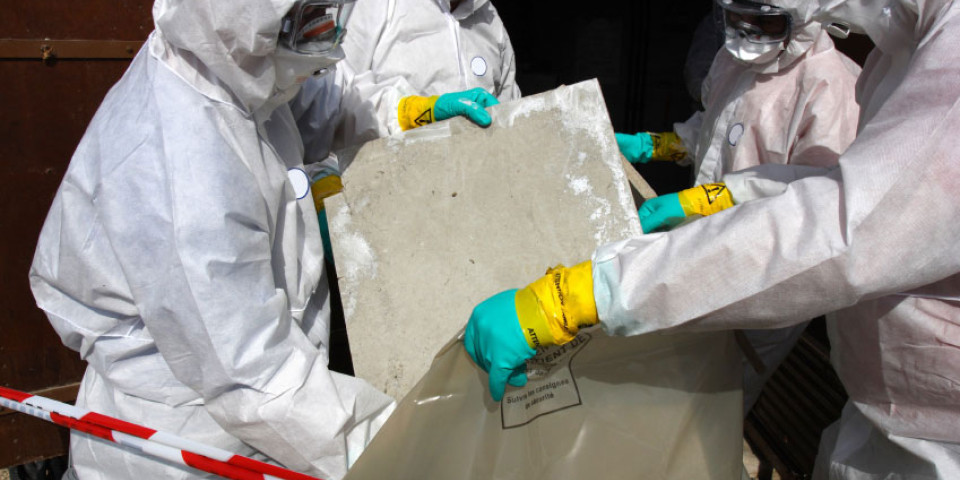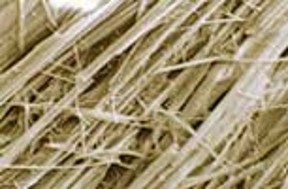Latest News
The ESS Guide to Asbestos Awareness
Posted on Friday, 17th July 2020

When working in and around building sites, there are few more dangerous hazards than asbestos. While it may not be as obvious as other dangers, asbestos is a huge contributor to death and serious illness in the construction industry, with major respiratory problems and cancers being caused by the substance.
While using the material has been banned in the UK since 1999, asbestos can still be found in any building constructed before then. It is vital that workers are aware of the danger it poses. In this week’s blog, we take at what asbestos is, where you can find it, and what training you need to protect yourself against it.
What is asbestos?
Asbestos is the name given to a group of minerals which are easily split into very strong fibres, making them incredibly useful for building work due to their strength and easy availability. However, as time has gone on, it has become clear that the benefits are far outweighed by the incredible dangers these materials pose to human life.
The substance was mined for centuries across the globe before the dangers became clear. Most countries now ban the use of asbestos, however some countries still mine and use the substance despite the risk to life they pose.
What are the dangers?
 Asbestos is a silent killer. Fibres from asbestos can easily make their way into your body through ingestion, absorbing through the skin or, most commonly, through breathing in the fibres. These have no distinct smell or taste, so there is no way of knowing if you have inhaled any. This is why having the correct RPE (Respiratory Protective Equipment) when operating around asbestos is so important.
Asbestos is a silent killer. Fibres from asbestos can easily make their way into your body through ingestion, absorbing through the skin or, most commonly, through breathing in the fibres. These have no distinct smell or taste, so there is no way of knowing if you have inhaled any. This is why having the correct RPE (Respiratory Protective Equipment) when operating around asbestos is so important.
Once in your body, these small asbestos fibres can cause serious problems for the lungs, leading to heavy scarring and damage to the alveoli. Over time this can progress into lung cancer and mesothelioma, a type of cancer that is brought on specifically by asbestos exposure. Mesothelioma alone causes around 2,250 deaths a year according statistics from the Health and Safety Executive (HSE). Working around asbestos has also been heavily linked to Chronic Obstructive Pulmonary Disease (COPD), which claims the lives of around 25,000 people every year.
Where is asbestos found?
The use of asbestos was fully banned in the UK in 1999, so any building refurbished or built before the year 2000 could potentially contain the substance. Until it was banned, asbestos was used in many of the common materials (such as cement) used in the construction of industrial and residential properties. Walls, roofs, ceilings, and pipes are just a few of the places the substance can be found.
What are the different types of asbestos?
There are six main types of asbestos which all have slightly different properties and are therefore used for different types of work:
- Chrysotile – This is the most common form of asbestos. Usually found in roofing, but can also be added to products such as cement, tiles and coatings.
- Amosite – Less common than Chrysotile. Normally used in insulating boards.
- Crocidolite - Much less common but the most dangerous due to strong and thin fibres.
- Anthophyllite – Used in much the same way as amosite, but much less common.
- Tremolite – Found in talc and vermiculate.
- Actinolite – Never used commercially so unlikely to be encountered.
These are often grouped together as ‘serpentine’ and ‘amphibole’ due to their reaction to water. Chrysotile asbestos is serpentine as the material is ‘water-loving’. All other types are amphiboles as they are ‘water-hating’.
What does asbestos look like?
Asbestos can vary in appearance depending on the type of the material. Due to the versatile nature of the substance, it can be very difficult to spot, which is why training is so important. However, you can normally identify the three main types of asbestos by their colour:
Chrysotile – White: The fibres are serpentine (curly) in appearance.

Amosite – Brown: The fibres are straight and needle-like.
Crocidolite – Blue: Like brown asbestos, the fibres are straight and needle-like.

The other three types of asbestos which were less commonly used in the UK, and therefore less likely to be encountered.
- Anthophyllite – Similar in appearance to brown asbestos.
- Tremolite – White or pale green. Straight and silky.
- Actinolite – Grey or green.
What is UKATA?
UKATA stands for the UK Asbestos Training Association. Established in 2008, UKATA is the country’s leading body in overseeing and improving asbestos training. The organisation works closely with the HSE to establish industry-wide legislation and look for ways to improve measures.
UKATA-approved training providers produce certificates which meet the high standards set by them and the HSE. Essential Site Skills have great relationship with the organisation, with all our asbestos courses all being certified by UKATA.
What training is available?
Due to the dangers posed by the substance, asbestos removal can only be completed by workers who have the right level of training. Asbestos courses are broken down into the three categories:
Category A – Asbestos Awareness
This training provides learners with the knowledge needed if they have the potential to come into contact with asbestos as a by-product of their work. It highlights the dangers of the material, how to spot it, and what to do if they encounter it. Category A courses do not permit delegates to work with or handle asbestos containing materials (ACMs).
Essential Site Skills provide the UKATA-accredited Asbestos Awareness course, ideal for anyone who works on any building site which could potentially contain the substance. We are delighted to now be delivering this course through remote video training to help with training during the Coronavirus crisis. You can learn more about our video learning here.
Category B – Non-Licensable Work with Asbestos
This training covers all of the information of Category A, but allows learners to perform non-licensed work on materials which contain ACMs. Non-licensed work is defined by the HSE as where the asbestos work is ‘sporadic and of low intensity’ and doesn’t exceed the legal control limit of 0.1 fibres per cubic centimetre.
Jobs that fall under this category include demolition and construction workers, electricians, plumbers, gas fitters and many more. For more details of what classifies as non-licensed work, refer to the Control of Asbestos Regulations 2012.
Essential Site Skills also provide category B training through our Non Licensable Work with Asbestos (UKATA) course. However, due to the practical nature of the course, we cannot offer this through video conference learning
Category C – Licensable Work with Asbestos
This is the highest form of asbestos training and will provide delegates with a HSE license which allows for complete asbestos removal for licensed work. This includes working around materials with high intensity asbestos such as sprayed coatings, loose fill insulation, asbestos millboards and clearing up ACM debris.
At Essential Site Skills, we provide the Level 2 NVQ in Removal of Hazardous Waste - Licensed Asbestos. Once workers have completed this NVQ, along with the necessary training and HS&E test, they will be able to apply for the ACAD CSCS Skilled Worker Card for licensed asbestos.
How often should you do an asbestos awareness course?
You should retake asbestos training every year. This is important to refresh your knowledge and get up to speed with any changes to legislation. For this reason, UKATA certificates are only valid for 12 months.
Looking for more information?
If you want to know anything else about our asbestos course, why not speak to a member of our team? You can call us on 0115 8970 529, or email the team at info@essentialsiteskills.com.


